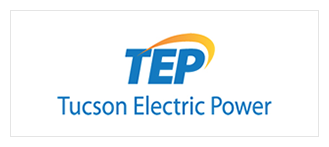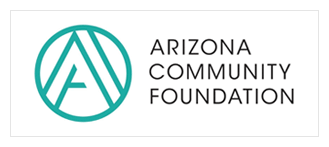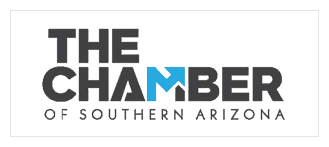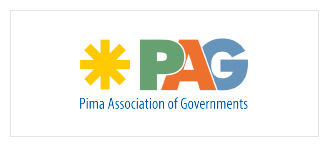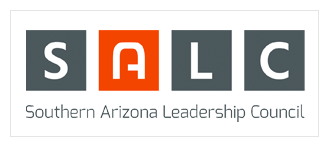 Analyze Youth Disconnection Rates in Tucson, Arizona MSA
Analyze Youth Disconnection Rates in Tucson, Arizona MSA
How are we doing?
Youth Disconnection (2023)

The youth disconnection rate across the 12 Metropolitan Statistical Areas (MSAs) varied widely in 2023. Tucson ranked fifth from the bottom, with 7.3% of its youth considered disconnected. Las Vegas reported the highest rate at 10.4%, while San Diego had the lowest at 5.0%. Only four MSAs reported a lower youth disconnection rate than the national average of 6.8%. In 2023, 6.8% of U.S. teenagers aged 16 to 19 were neither working nor in school, representing 1.18 million young Americans.
Disconnected youth are individuals who are not in school or employed, which includes both teenagers between the ages of 16 and 19, as well as young adults from 20 to 24. The term "opportunity youth" is frequently used as a synonym for "disconnected youth.
Why is it important?
According to the NCES (National Center for Education Statistics), in 2022, the overall “status dropout rate” (defined as the percentage of 16- to 24-year-olds who are not enrolled in high school and lack a high school credential) for the U.S. was 5.3%. To learn more about status dropout rates, visit the MAP Dashboard core indicator High School Graduation Rates.
Being disconnected from both the education system and the job market during these formative years can be discouraging and detrimental to young adults. Newport Institute highlights the negative consequences of youth disconnection, including reduced lifetime earnings, substance use, poor health, and criminal behavior.
Youth disconnection serves as a key indicator of a community's potential and reflects the level of opportunity available to its residents. It is closely linked to the overall well-being of a region and the broader health of the national economy. An article from the Social Science Research Council highlights that disconnected youth , on average, earn $38,400 less each year than their connected counterparts when they reach their thirties, underscoring the economic impact of youth disconnection.
How do we compare?
In 2023, girls and young women in the U.S. were less likely to be disconnected than boys and young men, with 6.1% and 7.5% disconnection rates, respectively. The state of Utah had the largest gender gap in youth disconnection rates. For those aged 16–19, the youth disconnection rate for males was 7.4%, while the rate for females was substantially lower at 5.0%. The state of Arizona followed a similar trend, with a youth disconnection rate of 8.9% for males and 7.3% for females.
In all peer metropolitan areas, females had lower disconnection rates than males, with the exception of the Colorado Springs and El Paso MSAs. In both of these MSAs, the disconnection rate difference between the genders was 0.6 percentage points. The Salt Lake City MSA exhibited the widest gap among peer MSAs in favor of females, with a 2.5 percentage point difference, indicating that females were significantly less disconnected than males. Figure 3 displays the youth disconnection by gender (U.S., Arizona, and MSAs).
Figure 3: Youth Disconnection Rates by Gender: U.S, States, and MSAs (16-19 Years Old ) 2023
Figure X: Youth Disconnection Rates by MSAs (16-24 Years Old ) 2022
The rates of disconnected youth vary by race and ethnicity across the country. As of 2022, Native American youth had the highest disconnection rate at 21.9 percent, surpassing all other major racial and ethnic groups in the United States. Arizona reported the highest disconnection rate among young Native Americans at 27.3%, followed by New Mexico at 24.7% and California at 21.6%. Black/African American teens and young adults had the second-highest disconnection rate in the U.S. at 16.8%. Nevada had the highest rate of youth disconnection among Black/African Americans at 26.4%, while Arizona had the lowest at 14.5%.
Of all the states observed on the MAP, higher rates of youth disconnection were reported for young Hispanics and Latinos compared to white, non-Hispanic youth. In the case of the MAP western MSAs, only Las Vegas had higher rates of youth disconnection for white, non-Hispanic youth (14.3%) than for young Hispanics and Latinos (12.9%).
The state of Arizona reported the largest gap between these two groups, with a 7.0 percentage point higher disconnection rate for young Hispanics and Latinos compared to white, non-Hispanic youth. Washington posted the smallest gap, with only a 0.1 percentage point difference. Among tracked western MSAs, Denver posted the largest gap between these two groups (a 7.2 percentage point difference), and Austin had the smallest gap (a 2.4 percentage point difference). Figure 4 shows the youth disconnection rate by race (U.S., states, and MSAs).
Figure 4: Youth Disconnection Rates by Race: U.S., States, and MSAs (16-24 Years Old ) 2022
What are the key trends?
As illustrated in Figure 6, the rate of disconnected youth declined from 2009 to 2018 across all western states and in ten out of the 12 MSAs. However, from 2018 to 2023, disconnection rates in most western states trended upward. In contrast, for the 12 MSAs, increases and decreases balanced each other out.
The disconnected youth rate in Arizona decreased from 8.5% to 8.1% between 2018 and 2023, while the national rate remained unchanged. Among the states, only four experienced a decrease in the disconnected youth rate. Oregon reported the largest increase in disconnected youth during this period, rising from 7.0% to 7.8%. Among MSAs, the Portland MSA posted the highest increase in disconnected youth, from 4.9% to 7.1%. In contrast, the Colorado Springs MSA reported a marginal difference of just 0.2 percentage points between 2018 and 2023.
Figure 6: Youth Disconnection Rates Trend, 16-19 Years Old (2009-2023)
How is it measured?
Youth disconnection rates are from U.S. Census Bureau American Community Survey (ACS) five-year estimates. Note that the ACS five-year estimates are produced over a five-year time period and can only be compared to non-overlapping five-year estimates (for example: 2006-2010 and 2011-2015). Youth disconnection data by race and ethnicity come from Measure of America, a project of the Social Science Research Council (SSRC).


